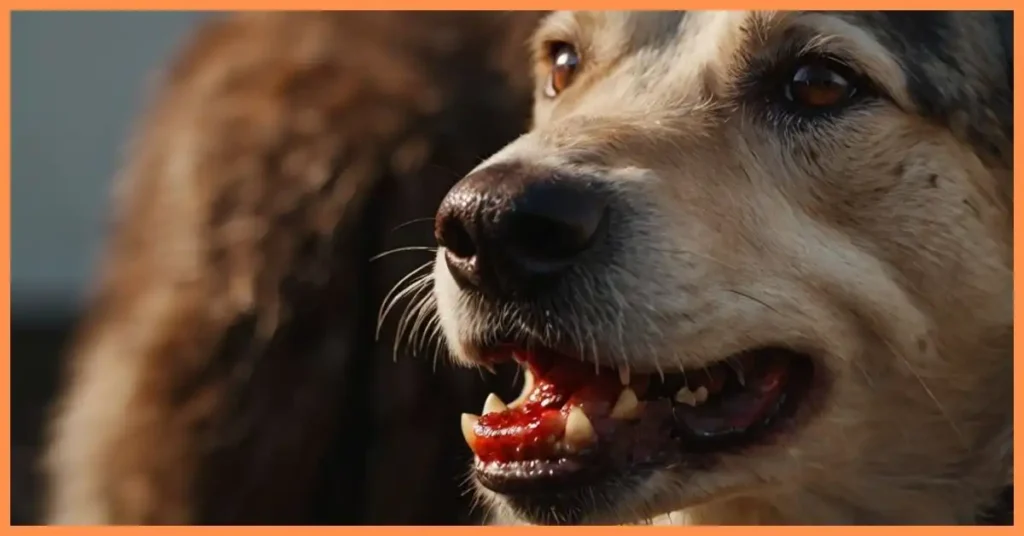How to Treat Bleeding Gums in Dogs: A Complete Guide
Bleeding gums in dogs can be concerning for any pet owner. Whether you notice spots of blood on your dog’s toy or discover their gums turning bright red, these signs of discomfort shouldn’t be ignored. Gum health is integral to your dog’s overall well-being, and addressing the root of the issue will help your furry friend lead a healthier and happier life.
In this guide, you’ll learn about the causes of bleeding gums in dogs, effective ways to treat them, and actionable steps to prevent future problems. Whether you’re a concerned pet owner or a veterinary professional seeking clarity, read on for a full breakdown.
Causes of Bleeding Gums in Dogs
Understanding why your dog’s gums might be bleeding is the first step toward finding a solution. Here are some of the most common causes of bleeding gums in dogs:
1. Poor Oral Hygiene
Neglecting your dog’s dental care can quickly lead to plaque and tartar buildup. Without regular brushing, bacteria thrive, causing inflammation that leads to bleeding gums.
2. Gum Disease
Gum disease, including gingivitis and periodontitis, is a prevalent cause of bleeding gums.
- Gingivitis involves inflammation of the gums due to bacterial plaque, resulting in redness, swelling, and minor bleeding.
- Without treatment, gingivitis can progress to periodontitis, where the decay extends beyond the gums into the bone, potentially leading to tooth loss.
Signs of Gum Disease:
- Dogs with red gums (especially around teeth)
- Difficulty chewing
- Pain during oral activities
Wondering how much to feed your Mini Aussie puppy? Explore our expert feeding guide to ensure your puppy grows healthy and strong with the right diet.
3. Dental Injuries
Just like humans, dogs can injure their gums by chewing hard objects, such as bones, sticks, or tough treats. Accidents, falls, or other kinds of trauma can also result in bleeding gums.
4. Puppy Teething
For puppies, teething is a natural yet uncomfortable process. During this phase, bleeding gums are common as baby teeth fall out to make way for permanent ones.
How to Treat Bleeding Gums in Dogs
Once you’ve identified the issue, taking swift action is key. Follow these steps to restore your dog’s gum health.
1. Regular Brushing
The simplest way to maintain your dog’s oral health is by brushing their teeth frequently.
- Use a toothbrush designed for dogs and dentist-approved canine toothpaste. Never use human toothpaste, as it can be harmful to dogs.
- Begin with gentle movements to avoid irritating already inflamed gums. Gradually, work your way to a thorough clean over time.
2. Professional Dental Cleanings
If your dog’s gums are persistently bleeding, it may be time to consult your veterinarian.
- What to expect:
Veterinary dentists will clean your dog’s teeth under anesthesia, removing plaque and tartar buildup that normal brushing might not tackle.
- Professional cleanings prevent serious gum diseases like periodontitis and can save your dog’s teeth in the long run.
3. Home Remedies
If your dog has mild bleeding gums, consider these safe, vet-approved home solutions:
- Dog-Safe Dental Products: Use antiseptic sprays or gels specifically designed to soothe gums.
- Soft Dog Chews: Provide soft dental treats that gently clean your dog’s teeth without causing further irritation.
- Salt Water Rinse (for minor injuries): Mix a pinch of salt with warm water and gently rub it across your dog’s gums with a clean cloth.
Is your dog suffering from Cushing’s disease? Learn how Melatonin can help manage symptoms of Cushing’s disease and provide a natural solution for your furry friend’s well-being.
Why Are My Dog’s Gums Bleeding?

1. Identifying the Cause
Bleeding gums may stem from easily treatable issues, such as plaque buildup from irregular brushing. However, persistent gum bleeding could signal more severe problems like gum disease or infections.
What to watch for:
- Red, swollen gums in dogs
- Gums that bleed easily when chewing or brushing
- Blood near your dog’s mouth or teeth
If your dog’s gums are bright red around the teeth or bleeding heavily without improvement, seek veterinary advice immediately.
2. Preventive Measures
Prevention is often easier—and less expensive than treatment. Integrate these habits into your routine to prevent bleeding gums in dogs:
- Dental Checkups: Visit your vet annually (or more often if suggested) for professional dental evaluations.
- Chew Toys: Opt for vet-recommended chew toys, which naturally clean teeth and massage gums.
- Healthy Diet: Choose high-quality pet food designed to promote oral health.
Are you struggling to create a routine for your new puppy? Check out our ultimate puppy schedule guide and discover routines for all ages to help your pup thrive!
Dogs’ Gums Bleeding When Brushing
Does your dog’s toothbrush come out with streaks of red? Gum bleeding during brushing is often a warning sign of oral distress.
1. Gentle Brushing Techniques
To minimize bleeding and discomfort when brushing:
- Use a soft-bristled toothbrush suitable for dogs.
- Introduce brushing slowly and reward your dog for staying calm.
- Apply light pressure with side-to-side motions, steering clear of excessively irritated areas.
2. Signs of Excessive Bleeding
While small amounts of blood are normal if your dog has gingivitis or plaque, significant or ongoing bleeding can indicate a bigger issue, such as advanced gum disease or infections.
Here’s what to do if brushing leads to excessive bleeding:
- Stop brushing immediately.
- Rinse the mouth with lukewarm water.
- Book an emergency visit to your vet.
Discover how Librela can relieve hip dysplasia and keep your dog comfortable and active.
Taking the Next Steps in Gum Health
Your dog’s oral health is often overlooked but plays a crucial role in their overall well-being. By addressing bleeding gums early, you can prevent more serious health complications.
Key Takeaways:
- Regular brushing and professional dental checkups are essential.
- Avoid hard objects that can cause gum injuries.
- Prioritize early detection and prompt treatment to ensure your dog’s health and happiness.
Maintaining your dog’s oral hygiene doesn’t have to be complicated. By staying proactive and addressing issues like bleeding gums as they arise, you’re giving your furry companion the care they deserve.
Conclusion
Bleeding gums in dogs can be caused by a variety of reasons, from injury or teething to more serious conditions such as gum disease or infections. To maintain good oral health, it’s important to regularly brush your dog’s teeth, schedule annual professional checkups, and provide them with appropriate chew toys and a healthy diet.
See veterinary advice immediately if you notice excessive bleeding or other concerning symptoms. Taking preventive measures and addressing issues early can save your dog’s teeth and overall well-being in the long run. So, make it a priority to care for your furry friend’s gums, just like you would for your own. Remember, a healthy mouth equals a happy dog! Keep smiling, Fido!
This content is not meant to be a substitute for professional veterinary advice. Always consult with a veterinarian if you have concerns about your dog’s oral health.
Concerned about the cost of a CT scan for your dog? Learn more about the factors affecting CT scan prices and how to ensure your pet gets the best care.
FAQs – Bleeding Gums in Dogs
1. Can dogs’ gums bleed from teething?
Yes, bleeding is normal during teething as puppies lose baby teeth, especially around 3-6 months of age. Encourage safe chew toys during this time.
2. How often should I brush my dog’s teeth?
Veterinarians recommend brushing your dog’s teeth at least 2-3 times per week.
3. What are the signs of serious gum disease in dogs?
Look out for severe inflammation, bad breath, difficulty eating, excessive drooling, and gum recession. These are indicators your dog may need veterinary care.







